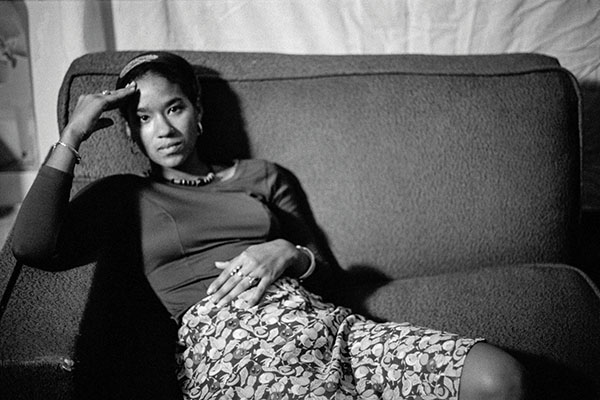Barkley L. Hendricks in New London
Lyman Allyn Art Museum, New London, CT • lymanallyn.org • Through September 3, 2023

Friends, neighbors, former students, and colleagues turned out for the opening of the exhibition. For some, it was to pay homage to a masterful teacher who ruled with a demanding hand for close to 40 years at Connecticut College. For others, it was from remembering his large-scale hyper-realist portraits hanging in his downtown studio. Or perhaps they had encountered him on a city street with what he referred to as his “mechanical sketchbook.” Hendricks and his camera were out to catch snippets of life in this gritty city, and the exhibition is a marvelous starting point by which to consider the role of place, community, and teaching in Hendricks’ career.
Hendricks (1945–2017) died on the cusp of his ascendancy, and he perhaps would gasp at the news that one of his works just sold at auction for five million dollars or that an exhibition of his work will take center stage at Frick Madison in September. His photographs, which he often used as preparatory sketches, are highly valuable as well. Tanya Pohrt, who curated this thoughtful exhibition, selected 35 works by which to explore Hendricks’s regional story.
Hendricks studied at the Pennsylvania Academy of the Fine Arts and at Yale University before receiving his BA and MFA from Yale in 1972. The artist made life-size portraits of Black friends, relatives, and strangers—painting in the old master tradition, mindful that his interest in Black figuration in the 1960s and 1970s put him outside the mainstream of Black artists of that period. Floyd R. Thomas, Jr., suggested in an essay that Hendricks was the contemporary counterpart of “a West African griot who documents, preserves, and visually articulates the history of his people.”
And what an assortment—from young male fashion plates Hendricks encountered in Paris, to an ex-con he’d known when they were kids, stunning in a white-as-snow overcoat. His beautifully composed photographs, too, are full of life and character, whether it’s the saucy trio of sex workers, or the young boy at a local Fourth of July celebration whose smile lingers as a distillation of pure joy. Hendricks catches the patterns of a marching band’s shoes as well as the menacing visage of a white-robed KKK member at a rally in the early 1980s. Hendricks captured the good,
the bad, and the ugly, as well as the celebratory. — Kristin Nord
